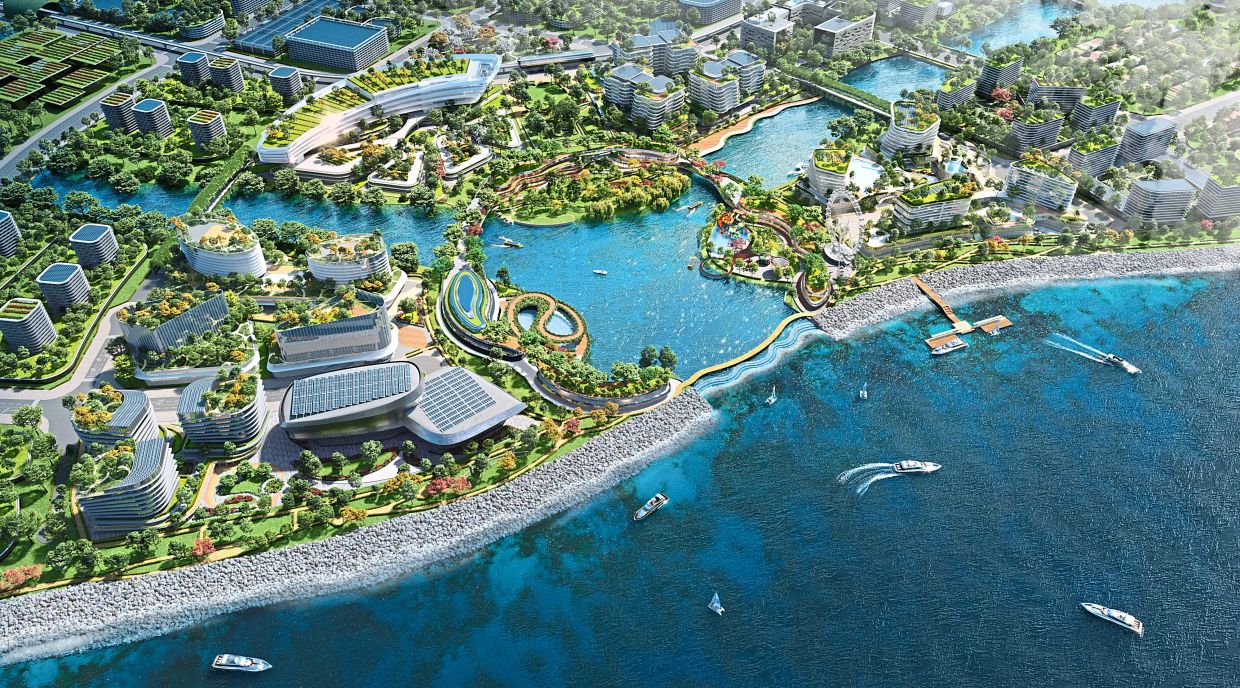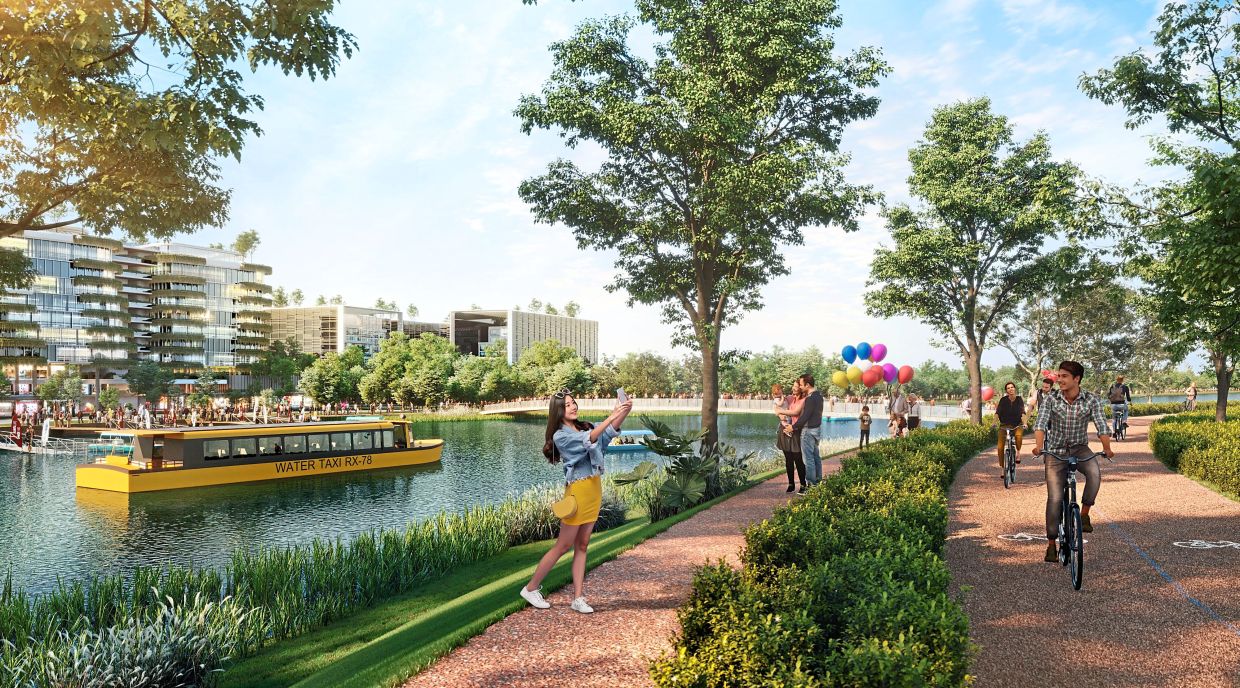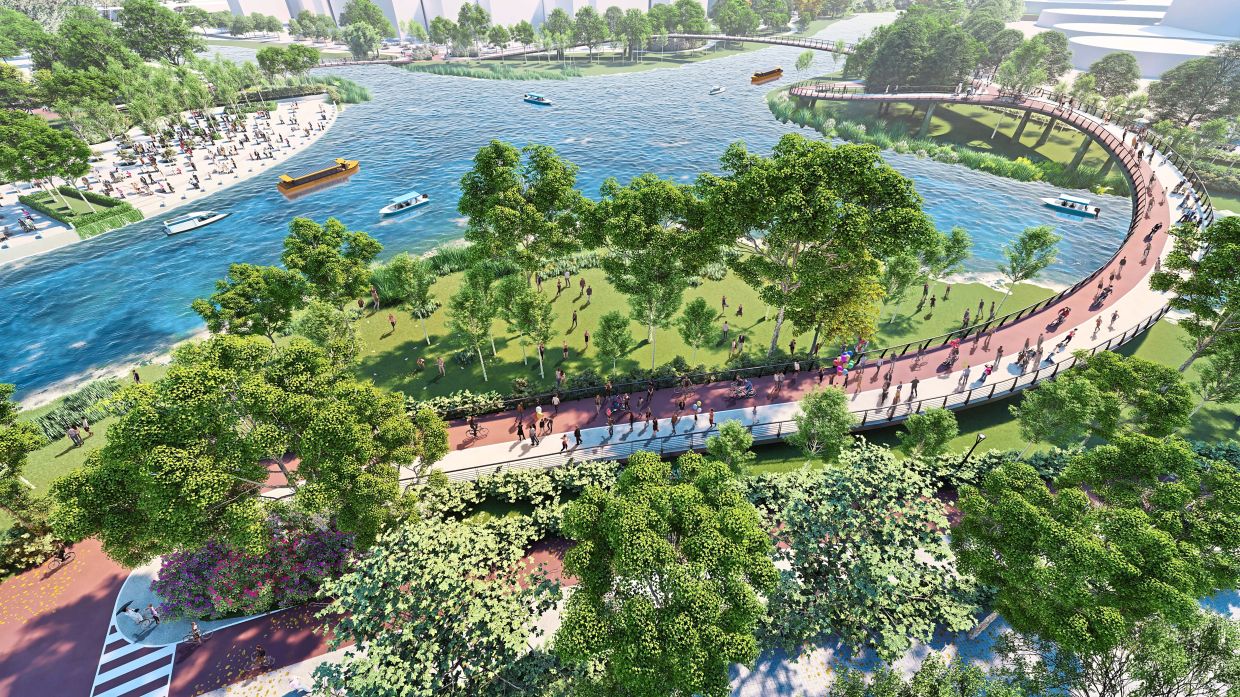Forging ahead into 2023 and beyond

The year 2022 ended with unprecedented political developments in Malaysia, leading to a unity federal government helmed by Datuk Seri Anwar Ibrahim as the nation’s 10th prime minister.
What does this mean for Penang which has been an opposition state for most of the last 14 years since 2008, now that there is a new prime minister and federal government in place?
The DAP-led administration has highlighted before that Penang often received a paltry sum from the annual federal budget despite its high contribution to the national gross domestic product (GDP).
How would you rate Penang’s progress in the last four years since you took office? What was the biggest challenge you and your administration faced?
CM Chow Kon Yeow: The biggest challenge is definitely the Covid-19 pandemic – the global disruptor of the early 21st century. Currently, we are still trying to rebuild the economy that has been critically affected by the virus, especially in the tourism and hospitality sectors.
In terms of Penang’s progress over the past four years, I’m heartened to say that the state has received the highest foreign manufacturing investment in 2021 amounting to RM74bil – surpassing all previous records. If we can build the right supporting ecosystem, I am confident that Penang is poised for further growth through the manufacturing sector.
In what areas could we have done better as a state? What are the improvements you wish to see moving forward?
As an industrialised state, we need to continue to improve our investment numbers. We need to plan for the long run, which is why we are looking to reclaim the Penang South Islands (PSI) to create land for the Green Tech Park (GTP), which is an industrial park that complies with the environmental, social and governance (ESG) standards for high-tech investors of the future.
The development will play a central role in Penang’s growth for decades to come. The GTP will further strengthen Penang’s position in the electrical and electronic (E&E) global supply chain as the Silicon Valley of the East.
Penang’s civil society organisations and the local fishermen have urged previous prime ministers to cancel the project, saying the reclamation will destroy marine life and the fisherfolks’ livelihood along with it. Why is Penang so adamant about pursuing this project?
We have always acknowledged their views and concerns. But I hope we can be fair. The scenario will not end fishing, as some critics have been claiming. The majority of the fishermen actually approve of the project. The social impact assessment done by an independent consultant shows that about 80% of the local residents, including fishermen, are supportive. No reclamation project in Penang has ever wiped out the fisheries and caused fishermen to become jobless.
Fishermen in south Penang island can still fish during and after the reclamation. Locations where many of them fish are beyond the PSI footprint, even today. This fact was verified by 200 satellite images studied by a geospatial expert. The fishermen have a vast area to fish. We will even provide a navigation channel with a minimum width of 250m, which will give fishers 24-hour access to the sea as part of the PSI development. Presently, they can only go to sea during high tide.
Fishermen are not being sidelined. In February 2021, we announced the Social Impact Management Plan (SIMP) which offers fishermen in south Penang island financial aid in the form of:
- Ex-gratia.
- New boat and engine.
- Skills training.
- Job and business opportunities.
- Education support for their children who are in primary and secondary schools.
- House ownership scheme.
The four fishermen units facing the proposed project site will get new jetties.
The fishermen are entitled to join the Koperasi Komuniti Pulau Pinang Selatan Bhd (KKPPSB) which will provide services and goods to support the PSI development and generate income for its members, namely the fishermen. So far, the cooperative has been tasked with managing and delivering the SIMP’s boat and engine aid programme, as well as serving as the main contractor for the Permatang Tepi Laut temporary fishermen jetty.
These benefits were offered under the SIMP following engagements with fishermen to gather their input. Various government agencies, which included the Fisheries Department and the Malaysian Fisheries Development Authority, also contributed their ideas.
The whole intention is to have a holistic plan for fishermen who want to continue to fish and also for those who want to broaden their horizons by going into entrepreneurship and other ventures. We want to diversify their options and give them more opportunities to generate income from other sources.
We also want to help their children do better in school so that they can get better jobs, including future jobs on PSI.
We are planning for the long term with the SIMP. These benefits are just the beginning. We can do more when PSI gets the approval to start work.

How will Penang address the inevitable environmental impact?
The reclamation process must adhere to stringent conditions set by the Environmental Department. There will be mitigation measures in place as required, such as silt curtains, round-the-clock turbidity and water quality monitoring and others. Failure to implement environmental control measures to minimise the impact on the environment will lead to a stop-work order, which nobody wants. We will implement all the required measures during construction.
The project will also implement the PSI Ecology Offset Master Plan (PEOM), which will provide coastal protection, carbon sequestration and new habitats for marine life that contribute towards the sustainability of the fisheries industry. The PEOM involves, among others:
- Planting mangroves.
- Deploying artificial reefs near Pulau Kendi and fish aggregating devices (FADs).
- Releasing fish and prawn fry.
- Building eco-shorelines along the reclaimed islands’ perimeter.
- Providing funds for marine ecology, fisheries, turtle and coral reef research.
The project has started to implement some of the initiatives in phases. The project has, directly and indirectly, contributed to the expansion of mangrove habitat with the planting of more than 3,500 saplings and release of two million fish fries into the sea.
Additionally, since 2008, there are more than 100 artificial reefs deployed into the sea.
All these measures are nourishing the local marine ecosystem and offsetting the impact of development. With all these initiatives and upcoming plans, it is one-sided and unfair to keep accusing Penang of harming the environment.
What about climate change? There is concern over rising sea levels and yet Penang is planning reclamation projects.
PSI’s master plan is guided by the United Nations Sustainable Development Goals (SDGs) and the Intergovernmental Panel on Climate Change (IPCC) recommendations, as well as the Low Carbon Cities Framework (LCCF). Penang wants to build a different kind of development – one that complies with ESG principles, which are important requirements in today’s business world.
As such, PSI’s development will incorporate many green measures, like reserving 164 hectares of land on Island A for public parks, water canals, wetlands, floodplains and bioswales to enhance biodiversity and cool the environment by 1°C to 2°C. These blue and green networks make PSI a sponge city with the capacity to retain, recover runoffs, control flooding and recharge groundwater to face more intense rainfalls.
Sustainable master planning, facilities sharing, implementation of climate-responsive designs, using 100% renewable energy to power the GTP, building super low-energy buildings, integrated transport planning that puts bicycles and pedestrians before cars, and using water taxis, electric-powered public transport like e-buses and the LRT will also lead to reducing carbon emissions.
Other plans include reducing freshwater demand through a dual-purpose water treatment plant, rainwater harvesting and water-saving devices, and reducing landfill waste with extensive recycling, food maceration and composting.
We have also taken note of the IPCC’s 2019 Special Report on the Ocean and Cryosphere in a Changing Climate finding that global mean sea levels would likely rise between 0.29m and 1.1m by the end of this century. PSI’s perimeter platform will be built with a minimum elevation of 3m above sea level and up to 5m in other parts of the island. The coastal buffer of a minimum of 40m will also enable long-term coastal adaptation flexibility to suit changing sea level conditions.

Can Penang convince the federal government to support the state’s ambition to develop this project?
I am confident the PM keeps an open mind when it comes to the economy and development issues. PSI is not new to Datuk Seri Anwar, who was briefed on the project at my office in Komtar in July 2019. He understands that Penang is a very dynamic state and we need to continue growing. He will be able to judge the proposed development based on its merits.
Soon after taking over Putrajaya, the PM spoke about eradicating poverty and inequality, regaining investors’ confidence, and driving economic growth. These objectives are also Penang’s goals, and as one of the more developed and industrialised states in the country, we have the responsibility to support the new central administration’s endeavours for a better Malaysia.
We can do that through PSI, which is a state project to create new land for future housing, commercial, industrial and infrastructure developments, as well as new attractions for tourism and recreation. The economic spillover will be huge.
In 2021, a Penang South Islands Economic Impact Assessment Study by Deloitte Tax Services Sdn Bhd estimated that PSI will bring about a RM2.2tril national GDP impact, over RM70bil in foreign direct investments (FDI), a total government revenue of RM226.5bil, and support 460,000 jobs in a 30-year timeframe.
If we do not create quality jobs, we will forever face the brain drain problem. In 2022, we launched the Creative Digital District and the Penang Internship Subsidy Programme as measures to recognise and retain our Malaysian talents. PSI is our long-term plan, with its lifestyle campus-like environment that will encourage industry collaboration with education institutions to develop and upskill our workforce and move the industry up the value chain. This will certainly bring great benefits to Penang and nearby states, as well as to Malaysia as a whole.
I believe PSI can offer Malaysia a good example to follow. We received positive feedback from various parties – such as government-linked agencies, companies and higher learning institutions – that visited Penang Infrastructure Corporation and Pusat Perkhidmatan Setempat Nelayan to learn about PSI, the SIMP and PEOM. Even fishermen from other states commended the SIMP. They lauded the initiatives and were impressed that Penang is going to such lengths to make this project successful and sustainable.
How is the progress of implementing the Bayan Lepas LRT? Will Penang seek federal funding?
We would greatly welcome financial support from the federal government. We have previously obtained a loan guarantee, but that was cancelled by the previous administration. Since then, we have looked at green financing. We are also in the middle of an RFP (request for proposal) process to appoint a contractor to build, deliver and run the LRT. We have also asked tenderers to propose a financial model for the project. We hope for some support from the federal government.
What do you think about civil society and Gerakan’s objection to the LRT and the Penang Transport Master Plan (PTMP) in general?
They are free to express their views. As with the PSI project, we have also addressed their comments. As (state infrastructure and transport exco) YB Zairil (Khir Johari) has said, there is no need to review the PTMP, as implementing the transport projects will benefit the economy during a recession.
While they disagree with the LRT, many Penangites and other Malaysians support the LRT proposal for Penang due to the traffic congestion problem. The project gained a 97% approval rate from over 22,000 people whose feedback was collected during the 2019 public inspection. In the recently-concluded PTMP roadshow, 88% of over 1,000 people surveyed said they were willing to give up driving if they could use the LRT.
What is your biggest hope or wish for Penang in 2023?
Looking at the forecasted recession ahead, my biggest hope is for Penang to be able to develop these critical infrastructures – the PSI, LRT, and other components of the PTMP – so that they can help the state withstand the impact and emerge as a more resilient and liveable place.
Source: TheStar.com.my


More RFPs again ?